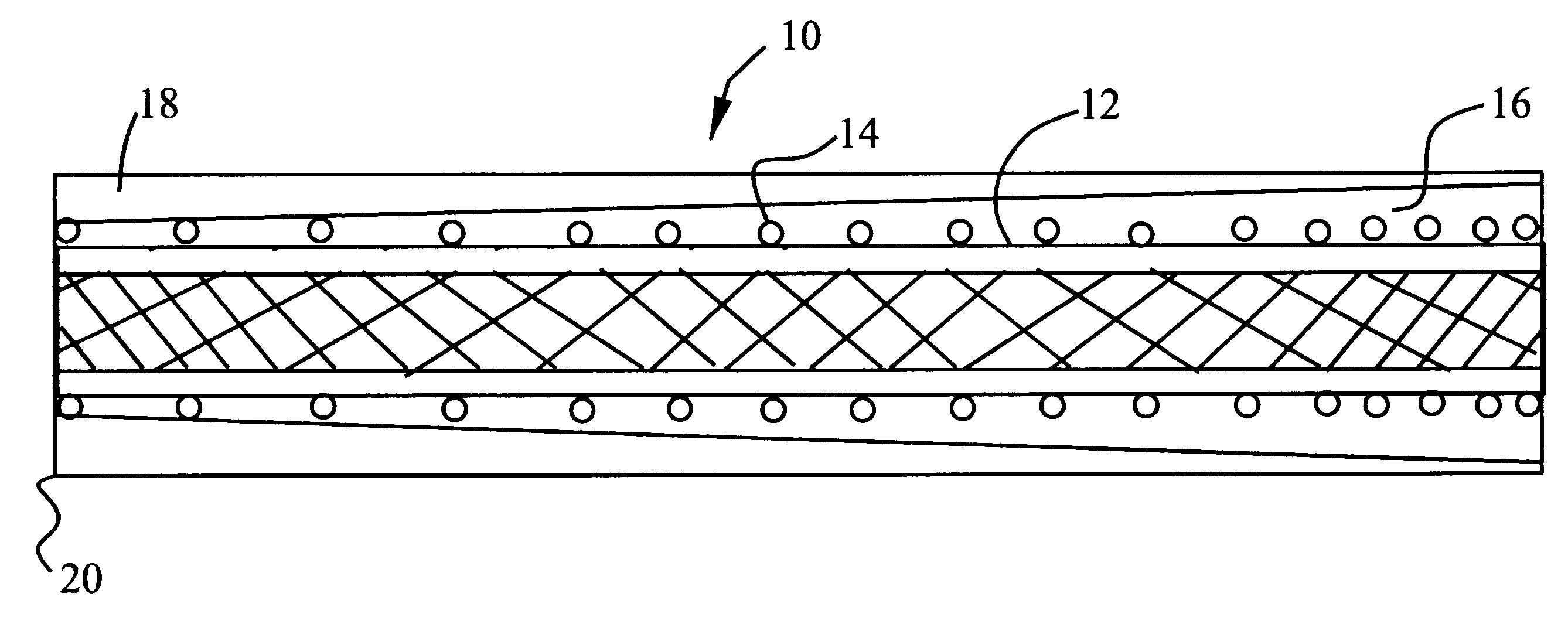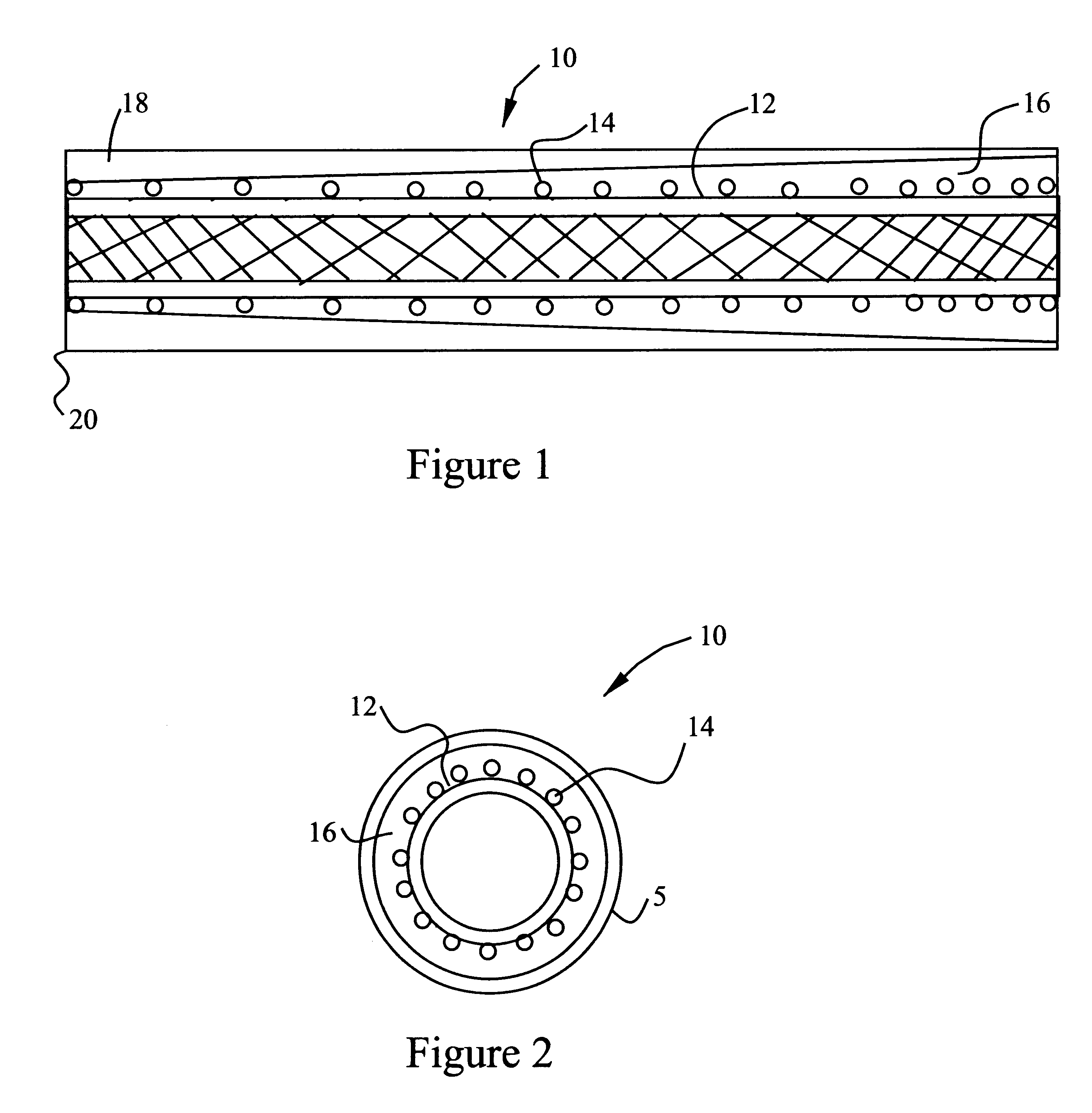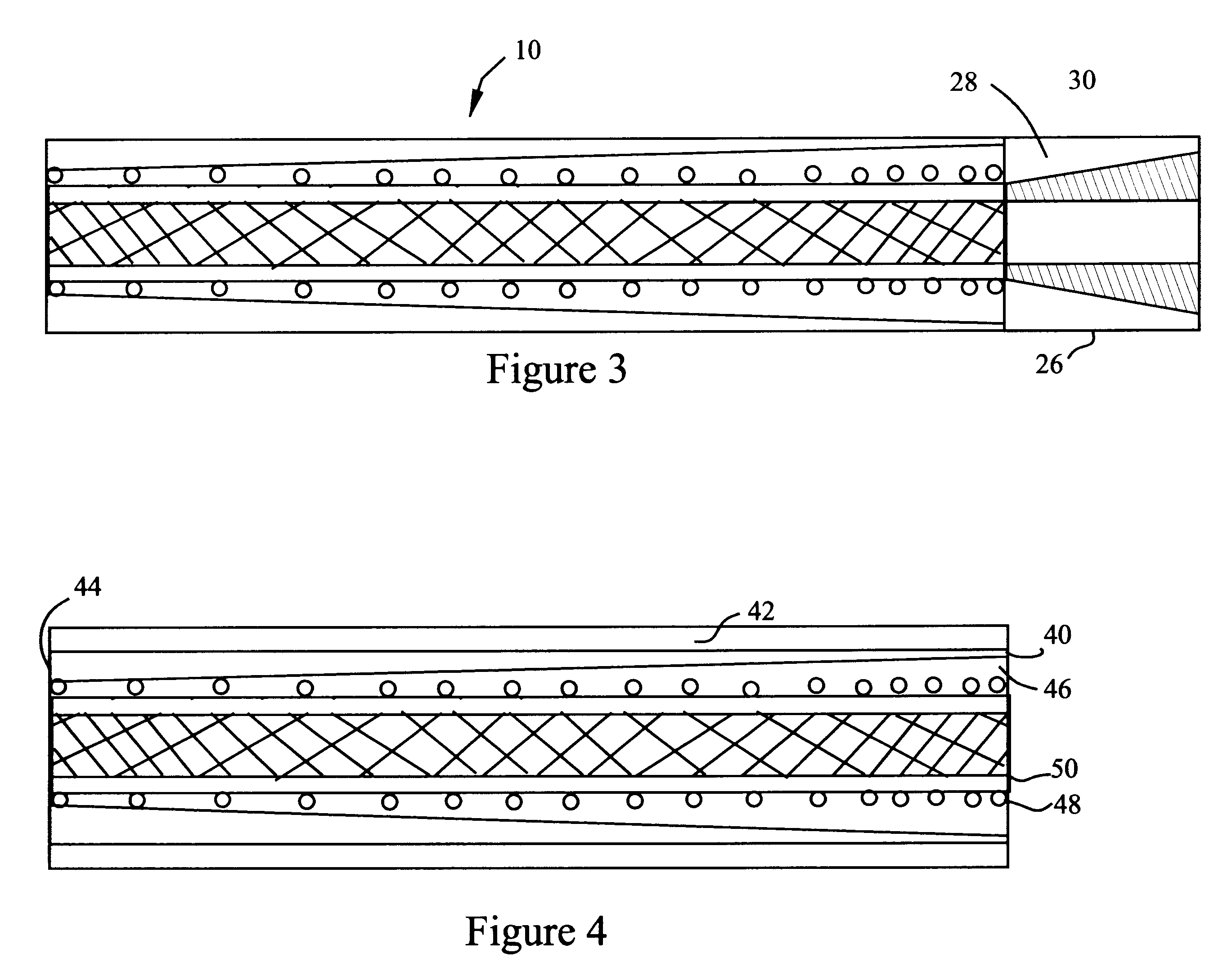Reinforced variable stiffness tubing
- Summary
- Abstract
- Description
- Claims
- Application Information
AI Technical Summary
Problems solved by technology
Method used
Image
Examples
Embodiment Construction
Currently variable stiffness catheters comprise an inner most layer that is comprised of a thin fluoropolymer film. This film is then covered with a braid, which is usually metallic but also can be made of a polymer, such as nylon, high density and linear polyolefines, such as polyethylene, or a composite, such as Kevlar. The actual braid design can be single or side-by-side strands, following a traditional braid pattern. The braid is then coated with at least two component co-tapered.
The cotapered layers of tubing, extend from the proximal to distal ends. In general, the discrete layers differ in durometer as they advance distally, forming a rigid to soft composite construction. Most advantageously the structure softens in durometer from distal to proximal end.
In other applications, a soft tube having a uniform durometer is joined with the braided substrate. A non-braided soft tip is then usually bonded to the distal end. Hubs and strain relief are fitted proximally and the tip is ...
PUM
 Login to View More
Login to View More Abstract
Description
Claims
Application Information
 Login to View More
Login to View More - R&D
- Intellectual Property
- Life Sciences
- Materials
- Tech Scout
- Unparalleled Data Quality
- Higher Quality Content
- 60% Fewer Hallucinations
Browse by: Latest US Patents, China's latest patents, Technical Efficacy Thesaurus, Application Domain, Technology Topic, Popular Technical Reports.
© 2025 PatSnap. All rights reserved.Legal|Privacy policy|Modern Slavery Act Transparency Statement|Sitemap|About US| Contact US: help@patsnap.com



